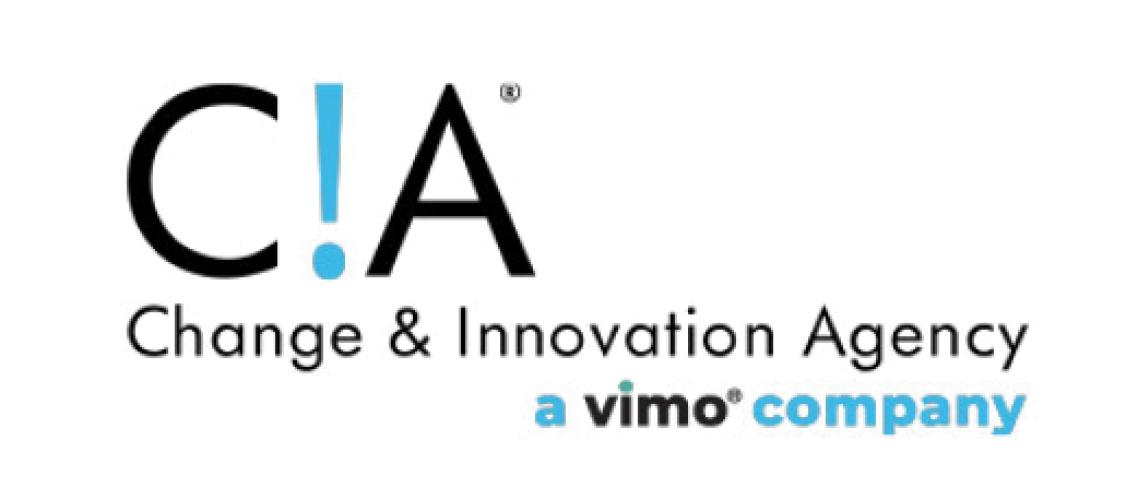NASWA Bulletin - December 19, 2014
In This Issue:
- President Signs FY 2015 Omnibus Appropriations Act
- Interim Final Rule on "Super-Circular" Published Today
- States' Minimum Wage Increases
- 113th Congress Adjourns
- House and Senate Committees in the 114th Congress Begin to Take Shape
- USDOL Announces Apprenticeship Grants
- ITSC Steering Committee New Members and Meeting in DC
- Unemployment Insurance Initial Claims and Continued Claims Decrease
President Signs FY 2015 Omnibus Appropriations Act
On December 16, 2014, President Obama signed the Consolidated and Further Continuing Appropriations Act, 2015 (H.R. 83), also known as the “omnibus” appropriations bill. It completes the appropriations process for fiscal year (FY) 2015 for most of the federal government.
Funding levels for U.S. Department of Labor (USDOL) and most of the federal government are in effect for the remainder of fiscal year 2015, which ends on September 30, 2015, and replaces the annualized funding levels set in the previous continuing resolution.
Due to policy disagreements surrounding immigration policy, the only federal department not covered in the omnibus is the Department of Homeland Security (DHS). Congress provided short-term funding for DHS in the form of a continuing resolution (CR) that expires February 27, 2015.
NASWA Resources
Click here for the NASWA Analysis of USDOL in H.R. 83.
Click here for the USDOL Legislative Language in H.R. 83.
Click here for the Explanatory Statement that accompanies H.R. 83 for USDOL.
Click here for USDOL budget tables in H.R. 83 prepared by the House and Senate Committees on Appropriations.
Click here for a NASWA budget table comparing funding levels between fiscal 2014 and fiscal 2015 for USDOL programs.
Some of the highlights for USDOL include the following:
Workforce Investment: The FY 2015 enacted budget includes 1.4% increases for the adult, dislocated worker, and youth programs. The budget also increases the governor’s set-aside from 8.75% to 10% of a state’s allocation under each of the three formula grants, although the set-aside was authorized at 15% in the Workforce Innovation and Opportunity Act. The bill also provides $79.7 million for Youthbuild, a 3% increase over FY 2014.
UI Consortium Language: The FY 2015 enacted budget includes retroactive language (to fiscal year 2011) providing consortium states with an additional year to spend their Unemployment Insurance Information Technology Modernization grants.
Unemployment Insurance: The FY 2015 enacted budget reduces funding for Unemployment Insurance (UI) State Administration grants from $2.9 billion to $2.8 billion, primarily due to an expected decline in workload. Included in this funding is $80 million to conduct in-person reemployment and eligibility assessments (REAs). Further, the omnibus maintains a provision from FY 2014 instructing the Department of Labor (DOL) to redirect any excess administrative funding after workload demands are met toward program integrity, performance improvement, and technology investments. This excess funding is to be distributed proportionally to all states based on their base UI allocation.
Trade: The FY 2015 enacted budget provides funding for the Trade Adjustment Assistance (TAA) for Workers program to allow for the full operation of the program throughout fiscal year 2015, including the provision of benefits to groups of workers certified after December 31, 2014. Although it appeared the program would shut down on December 31, 2014, the appropriation of funds for fiscal year 2015 will ensure the TAA program remains in operation.
Multiple Employment and Training Programs: The omnibus includes language regarding a 2011 report issued by the Government Accountability Office (GAO) that examined overlapping employment and training programs and requires DOL to submit a report on the status of efforts to improve collaboration, evaluate delivery strategies, and increase administrative efficiencies.
UI Overpayments: The omnibus includes language requiring the Office of Inspector General (OIG) at USDOL to conduct multi-State reviews on efforts to identify and recover UI overpayments and submit a report to the House and Senate Committees on Appropriations by March 31, 2016 on the progress and effectiveness of this effort.
Performance Partnerships: The FY 2014 budget created a new pilot program for states, local governments, and tribes to test innovative strategies for disconnected youth. The program allows entities to blend existing discretionary funding streams across multiple federal programs, and to seek waivers of program requirements. The enacted budget includes a provision allowing the use of discretionary funds in FY 2015 for the program, and extending the maximum length of the performance partnership agreements by one year, to September 30, 2019.
When Congress returns in January, it will need to address funding for DHS to complete the FY 2015 budget. Attention will then turn to the FY 2016 budget, with the release of the President’s budget, which starts the process and is due on the first Monday in February.
Return to TopInterim Final Rule on "Super-Circular" Published Today
Today, the Office of Management and Budget issued an Interim Final Rule that makes changes to federal grants management. The so-called "Super Circular," which streamlines requirements, supersedes eight existing OMB Circulars and concludes a two-year effort by OMB and the Council on Financial Assistance Reform (COFAR). This interim final rule is effective on December 26, 2014.
For a pdf of the interim final rule, please click here. For today Federal Register, please click here. (the section pertaining to the U.S. Department of Labor begins on page 76082). USDOL guidance, TEGL 15-14, Implementation of the New Uniform Guidance Regulations is available on the USDOL website at http://wdr.doleta.gov/directives/corr_doc.cfm?DOCN=5740
Return to TopStates' Minimum Wage Increases
Starting New Year's Day, twenty-nine states and the District of Columbia will have minimum wages above the federal minimum wage according to data compiled by the National Conference of State Legislators (NCSL).
- As of Jan. 1, 2015, 29 states and D.C. will have minimum wages above the federal minimum wage.
- Four states - Alaska, Arkansas, Nebraska and South Dakota - approved minimum wage increases through ballot measures in the 2014 general election; Illinois voters approved an advisory measure.
- The legislatures in Connecticut, Delaware, Hawaii, Maryland, Massachusetts, Michigan, Minnesota, Rhode Island, Vermont, West Virginia and D.C. enacted increases during the 2014 session.
- Minimum wages will go up in nine states on Jan. 1, 2015 because of indexed increases in their state law: Arizona, Colorado, Florida, Missouri, Montana, New Jersey, Ohio, Oregon, and Washington.
For a state-by-state listing, please visit the NCSL website at http://www.ncsl.org/research/labor-and-employment/state-minimum-wage-chart.aspx
Return to Top113th Congress Adjourns
On December 16th, the 113th Congress officially completed their work following Senate passage of H.R. 5771, a retroactive extension of more than 50 tax provisions including the Work Opportunity Tax Credit, which already passed the House. President Obama is expected to sign the legislation.
Section 119 of the legislation provided an extension of the Work Opportunity Tax Credit (WOTC) for qualified individuals for work which began after December 31, 2013 and on or before December 31, 2014. The text of the bill is available at www.congress.gov, click on “Legislation” and insert HR 5771.
Although the one year extension is welcome news, it once again raises the question about authorization for a continued extension for individuals hired in 2015. However, state workforce agencies should receive USDOL guidance in the coming days instructing them to accept applications (certification requests) in anticipation of a retroactive reauthorization in 2015. In addition, SWAs should have $18.5 million for WOTC State Administration for the remainder of FY 2015 which ends September 30, 2015 provided through the Omnibus Appropriations Act signed by the President this week.
Congress will not return to Washington until January 6, 2015, when the 114th Session of Congress will begin.
Return to TopHouse and Senate Committees in the 114th Congress Begin to Take Shape
With the next session of Congress beginning on January 6, 2015, membership on House and Senate committees are starting to take shape. The Senate and House leadership has provided a partial listing of who may lead some of the committees next year.
On December 15, the Senate Republican Conference announced their committee assignments for the 114th Congress. However, the assignments are subject to ratification by the Republican Conference as well as the full Senate. New Committee Chairs will be selected by a vote of the members of each respective panel and then ratified by the Republican Conference. For a detailed listing of committee rosters affecting NASWA issues, please click here.
Please note: This is an “unofficial list” and the rosters are preliminary and are subject to change. Many of the House rosters remain only partially complete and Senate committee chairmen have yet to be officially ratified. But it provides an overview of who will likely lead the key congressional committees affecting NASWA next year. These committee rosters will be updated as new information becomes available.
Senate Committee on Appropriations:
It is expected that Senator Thad Cochran (R-MS) will chair the Senate Committee on Appropriations in the 114th Congress. Senator Cochran also served as chair of the appropriations committee in the 109th Congress. With the party shift in the Senate this past November, Senator Barbara Mikulski (D-MD) will step aside as the chairwoman but is anticipated to remain the Ranking Democrat on the committee. Other Majority Senators expected to be named to the committee include: Senators-elect Shelley Moore Capito (R-WV), Bill Cassidy (R-LA), James Lankford (R-OK), and Steve Daines (R-MT). The current Minority Senators expected to be named to the committee include: Brian Schatz (D-HI), Tammy Baldwin (D-WI), and Christopher Murphy (D-CT).
House Committee on Appropriations:
Current committee Chairman Rep. Harold Rogers (R-KY) has two more years of tenure under GOP rules and is expected to remain as chair. Rep. Nita M. Lowey (D-NY) is also expected to remain the committee’s Ranking Minority Member. NASWA will be watching closely who assumes the Subcommittee Chair of Labor-HHS-Education. The current subcommittee chair, Rep. Jack Kingston, will be leaving Congress as he was defeated in the Senate primary, by Senator-elect David Perdue (R-GA). It is expected that Rep. Tom Cole (R-OK) may become the Chairman of the Appropriations Subcommittee on Labor-HHS-Education.
Senate Committee on Finance:
Current Ranking Member on the Senate Committee on Finance, Senator Orrin Hatch (R-UT), is expected to take over as chair, while current Committee Chair, Ron Wyden (D-OR), is expected to become the committee’s Ranking Minority Member. On December 15, 2014, Senator Hatch formally welcomed current Senators Dan Coats (R-IN), Dean Heller (R-NV), and Tim Scott (R-SC) to the committee.
House Committee on Ways and Means:
The current Chairman of the Committee, Dave Camp (R-MI), is retiring, and the House Republican Steering Committee selected Paul Ryan (R-WI) to chair the committee in the 114th Congress. On December 4th, 2014, Rep. Ryan announced the subcommittee assignments for the Ways and Means Committee with Rep. Charles Boustany (R-LA) chairing the Subcommittee on Human Resources which handles most issues related to unemployment insurance. Rep. Ryan also welcomed Patrick Meehan (R-PA), George Holding (R-NC), Jason Smith (R-MO), and Kristi Noem (R-SD) as new members to the committee. Rep. Sander M. Levin (D-MI) will remain the Ranking Democrat on the committee, but no further announcements have been made on Member assignments for the Minority.
Senate Committee on Health, Education, Labor & Pensions (HELP):
Although Senator Michael Enzi (R-WY) is the most senior Majority Member on the committee, he is expected to be the next chair of the Senate Budget Committee allowing the next most senior member of the committee Senator Lamar Alexander (R-TN), to assume the Chair. Senator Susan Collins (R-ME) and Senator-elect Bill Cassidy (R-LA) will join the committee. On the Minority side, Senator Patty Murray (D-WA) is expected to be the Vice Chair on the Senate HELP Committee since the current Chair of the Committee, Tom Harkin (D-IA), is retiring. Senator Murray is one of the primary architects of the Workforce Innovation and Opportunity Act.
House Committee on Education and the Workforce:
Rep. John Kline (R-MN) is the current Chairman of the House Education and Workforce Committee and is expected to remain as Chairman. Majority Representative-elects Buddy Carter (R-VA), Mike Bishop (R-MI), Glenn Grothman (R-WI), Steve Russell (R-OK), Carlos Curbelo (R-FL), Elise Stefanik (R-NY), Rick Allen (R-GA), and Dave Brat (R-VA) are expected to join the committee. For the Minority, former Ranking Member George Miller (D-CA) is retiring after 40 years on the committee and Rep. Robert Scott (D-VA) is expected to be the new Ranking Minority Member.
USDOL Announces Apprenticeship Grants
The U.S. Department of Labor, on December 11th, announced that $100 million in grants are available to expand registered apprenticeship programs in high-skilled, high-growth industries like healthcare, biotechnology, information technology and advanced manufacturing. Registered Apprenticeships have long been known as one of the best training models for skilled trades ("earn while you learn"), yet the model remains underutilized in the United States, according to a USDOL press release.
Approximately 25 grants from $2.5 million to $5 million each will be awarded using funds collected from employers who use H-1B visas to hire foreign workers. Programs funded by this initiative will provide U.S. workers with training to fill jobs that 1) are projected to hire a substantial number of new workers; 2) are being transformed by technology and innovations that require 21st century skills for workers; 3) are new and emerging industries and/or businesses that are projected to grow; or 4) have a significant impact on the economy overall.
Funding applications must be submitted by April 30, 2015. The Funding Opportunity Announcement, which includes information on eligibility and how to apply, is available at http://www.grants.gov.
Return to TopITSC Steering Committee New Members and Meeting in DC
The Information Technology Support Center (ITSC) held its quarterly steering committee meeting in Washington, D.C. last week. During this meeting, the Steering Committee (STCO) welcomed two new members, Brett Flachsbarth (UI Director, KS) and Gail Overhouse (IT Director, CA). Below are some key discussions from the meeting:
Strategic Priorities
The Steering Committee affirmed ITSC’s strategic priorities and its strategic plan for the next year. The Committee agreed that ITSC’s primary focus is to support state workforce agencies with their UI Business Process Reengineering and IT Modernization efforts. The ITSC supports states with its online products and services such as project collaboration portals, SDDS, OccuCoder, and other tools. In addition, ITSC also provides states with education and training related to the UI IT modernization project lifecycle. This training provided is available on the UI Learning Center on ITSC’s website, www.itsc.org.
UI Learning Center – Legislative e-learning and UI Trainer’s Forum
The UI Learning Center is an initiative that was approved by the Steering Committee a year ago. Since then, the ITSC launched a robust online learning center equipped with a learner’s catalog and ability to track and report a learner’s progress. In October, a pilot course on UI Legislation was completed with USDOL and about 60 state employees. This course converted a large volume of course materials into a cohesive online e-learning format. The course is now available to states and a formal announcement with the webinar track will be announced at a later date.
Another initiative that was presented to the STCO is a forum for UI trainers to share content and learning templates with other state trainers. This initiative sprouted with a state sharing some of their training content and ITSC saw this as an opportunity to establish a collaboration portal on ITSC’s website to share content and other useful information for state UI trainers. This forum will be announced next month.
Cloud Feasibility Update
ITSC also updated the committee on the status of the UI Cloud Request for Information (RFI) that was released this past summer. ITSC is currently interviewing several of the vendors that submitted a response to further develop proof of concept(s) of using cloud technology in UI. Additional information will be coming regarding this effort and states will have an opportunity to engage with ITSC to move forward with proof of concept(s).
For more information on ITSC, please visit the ITSC website, www.itsc.org or contact ITSC Product Manager, John Quichocho at (202) 650-5165 or jquichocho@naswa.org.
Return to TopUnemployment Insurance Initial Claims and Continued Claims Decrease
The U.S. Department of Labor reported for the week ending December 13, 2014, seasonally adjusted unemployment insurance initial claims decreased from the previous week’s revised figure.
Seasonally adjusted initial claims decreased by 6,000 to 289,000 from last week’s revised figure of 295,000. The 4-week moving average was 298,750, a decrease of 750 from the previous week's revised average of 299,500. The unadjusted initial claims level totaled 326,930 down 61,841 from the previous week, and down 87,683 from the level of 414,613 for a comparable week in 2013. UI continued claims, seasonally adjusted, for the week ending December 6, 2014 were 2,373,000 down 147,000 from the previous week’s revised figure. The 4-week moving average increased 10,000 to 2,397,000 from the prior week’s revised figure of 2,387,000.
The total number of individuals claiming benefits in all programs for the week ending November 29 was 2,576,605, an increase of 422,949 from the prior week. Regular state continued claims increased by 412,293, and EB increased by 1. During the week of November 29, 2014, continued claims for ex-federal employees stood at 18,571 up 2,909 from the prior week, and for newly discharged veterans, 26,633 up 3,067 from the prior week. Continued claims have increased slightly over the past few weeks but still remain below the Average Weekly Insured Unemployment level used in the FY 2015 budget.
Return to TopFor questions or comments, please contact NASWA Bulletin Editor Marc Katz at mkatz@naswa.org.

































